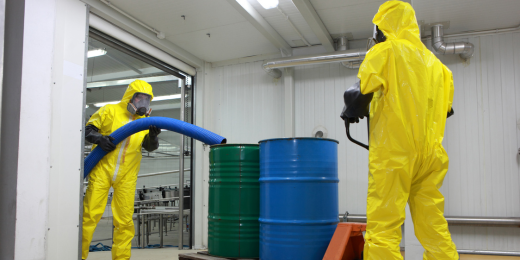The 10-Second Trick For Reclaim Waste
The 10-Second Trick For Reclaim Waste
Blog Article
Some Ideas on Reclaim Waste You Need To Know
Table of ContentsWhat Does Reclaim Waste Do?The 10-Minute Rule for Reclaim WasteHow Reclaim Waste can Save You Time, Stress, and Money.The Best Strategy To Use For Reclaim WasteWhat Does Reclaim Waste Do?
Discover the kinds, events, and types of liquid waste. Domestic sewer waste describes the waste and products from a property sewage-disposal tank. This sort of waste is created by people in homes, institutions, and various other buildings. This only includes sewage-disposal tanks that have a drain area. The correct management and disposal of residential sewer waste require fluid waste to be moved to a sewer therapy plant where the appropriate approaches and tools are put on detoxify and dispose of waste.
Industrial waste often consists of prospective threats, such as combustible products or a mixture of liquid and strong waste products, and calls for a more innovative and detailed disposal procedure. The disposal of business waste typically includes the purification of waste prior to transportation to make sure secure and proper disposal. Industrial waste is created from results and overflow of commercial procedures and production.
This sort of waste can not use the same sewage management transportation or procedures as septic or industrial liquids. The hazardous waste monitoring process calls for the examination and testing of liquid waste prior to it undergoes the disposal procedure (liquid waste removal melbourne). Runoff waste is the fluid waste that comes from drainage and excess stormwater in highly booming locations or cities
Overflow waste can trigger contamination and flooding otherwise dealt with correctly. Find out more concerning sewage system cleaning and waste administration. Making certain correct waste management can protect against disasters and minimize ecological damage. Both individuals in residential settings and specialists in commercial or production sectors can benefit from comprehending the processes and regulations of liquid waste administration.
Little Known Questions About Reclaim Waste.
Contact PROS Services today to discover about our waste monitoring and disposal solutions and the appropriate means to take care of the fluid waste you create.
(https://reclaimwaste1.start.page)This so-called 'wastewater' is not only a vital resource however, after therapy, will certainly be launched to our land, rivers or the ocean. Made use of water from bathrooms, showers, baths, cooking area sinks, laundries and industrial processes is recognized as wastewater.

water used to cool down machinery or tidy plant and tools). Stormwater, a kind of wastewater, is runoff that moves from farming and city locations such as roof coverings, parks, gardens, roadways, courses and rain gutters right into stormwater drains, after rainfall. Stormwater flows untreated directly to regional creeks or rivers, at some point reaching the sea.
See This Report on Reclaim Waste
In Queensland, the majority of wastewater is treated at sewage therapy plants. Wastewater is transported from domestic or commercial sites via a system of drains and pump stations, understood as sewage reticulation, to a sewer therapy plant.
The Department of Natural Resources advises city governments regarding managing, operating and preserving sewerage systems and treatment plants. In unsewered locations, neighborhood governments may require householders to set up specific or home sewer therapy systems to treat domestic wastewater from toilets, kitchens, shower rooms and washings. The Department of Natural Resources authorises using home systems when they are verified to be effective.
Most stormwater obtains no therapy. In some brand-new subdivisions, treatment of some stormwater to eliminate litter, sand and gravel has actually begun making use of gross contaminant catches. Wastewater treatment occurs in 4 stages: Removes solid issue. Larger solids, such as plastics and various other things wrongly released to sewers, are eliminated when wastewater is travelled through screens.
Wastewater after that streams into large storage tanks where solids settle and are removed as sludge. Oil and residue are skimmed from the surface. Uses little living microorganisms recognizes as micro-organisms to break down and remove staying liquified wastes and fine particles. Micro-organisms and wastes are incorporated in the sludge. Eliminates nitrogen and phosphorus nutrients that can trigger algal blossoms in our waterways and threaten marine life.
The Only Guide to Reclaim Waste
Nutrient elimination is not offered in all sewer treatment plants due to the fact that it requires pricey specialized devices. It is becoming much more typical in Queensland. Clear liquid effluent generated after treatment may still include disease-causing micro-organisms. If this effluent is released right into waterways such as rivers or the sea, the micro-organisms will eventually pass away out.

The majority of wastewater flows right like it into the sewage system. Under the Act, local federal governments carry out approvals and permits for ecologically relevant activities (Ages) including wastewater releases that could have a neighborhood impact.
The Single Strategy To Use For Reclaim Waste
Otherwise, samples are taken for laboratory analysis. Often numerous tests are required to establish the degrees of each of the different contaminants such as oils, hefty metals and pesticides in water. Tracking gives factual details about water high quality and can validate that permit problems are being satisfied. The details acquired with surveillance provides the basis for making water quality decisions.
Report this page